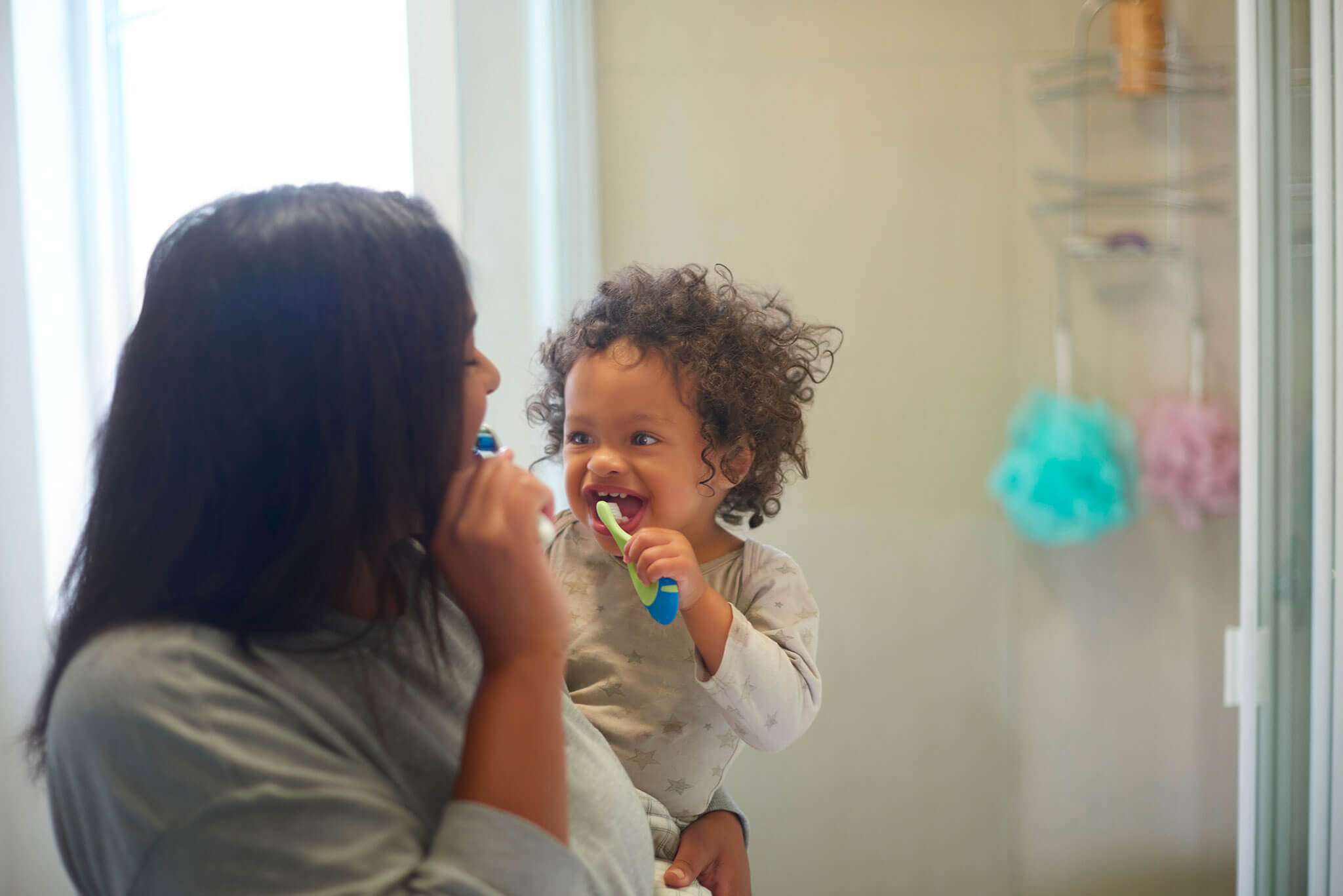
Healthy Dental Habits to Teach Your Children
As a parent, you play a pivotal role in shaping your child’s dental habits, setting the foundation for a lifetime of healthy teeth and gums. Establishing good oral hygiene for kids practices early not only prevents dental issues but also cultivates habits that last a lifetime. Here are tips on how to care for kids’ teeth and teach your children healthy dental habits to keep decay at bay.
Start oral hygiene early
The journey to good oral health begins even before the first tooth emerges. Wipe your baby’s gums with a soft, damp cloth after feedings to remove bacteria. As soon as the first tooth appears, typically around six months, begin brushing with an infant toothbrush using a smear of fluoride toothpaste.
Set a brushing routine
Children should brush their teeth twice a day with fluoride toothpaste. Parents must supervise and perhaps manually help kids under the age of 6 with brushing until they have mastered the technique. By age 2, children should learn to spit while brushing their teeth. From age 3 on, children should use a pea-sized amount of fluoride toothpaste until they have learned not to swallow it—without swishing with water as adults do.
Fluoride and diet matter
It is important to provide children with drinking water that contains fluoride, whether in a bottle or a sippy cup, to help prevent decay. Your child’s dentist may recommend applying dental sealants, another preventive therapy. Some schools offer dental sealant programs to their young students, which may also be available through other local organizations in your area.
When possible, limit or avoid sugary foods, juices, and candy (especially sticky candy, gummy vitamins, and fruit leather), which can cause decay that erodes tooth enamel. If kids eat these or similar items, have them rinse with water or brush their teeth immediately afterwards. This is important when taking sweetened liquid medicines as well.
Lead by example
When it comes to demonstrating good dental habits, lead by example. “Monkey see monkey do” applies to developing a good oral care regimen. Kids like to imitate their parents and siblings, so if everyone is brushing their teeth two times a day in the right way, they will follow suit. Especially if you make it look like fun. If you talk about what you’re doing while showing them how to make little circles on their teeth with the toothbrush and when and how to spit they will follow the leader and form the habit of doing a thorough job of it.
Make brushing fun
What could be more fun than brushing your teeth with your mom or dad? Picking out your own toothbrush is a place to start. Kids toothbrushes come in the shapes of all kinds of cartoon and movie characters they will be familiar with. The same goes for toothpaste tubes. Let them pick one or more (why not change to a different character every week?!) and sing or recite character lines during the brushing session. Be sure to buy children’s toothpaste that contains fluoride.
You can also read books together about teeth and toothbrushing. Children’s books on teeth and about going to the dentist abound. Read books like The Tooth Book by Dr. Seuss, Brush! Brush! Brush!, The Berenstain Bears Visit the Dentist, My First Visit to the Dentist, and Sugarbug Doug: All About Cavities, Plaque, and Teeth, to help encourage them to brush correctly and prepare them for a visit to the dentist. Encourage them to ask questions about what to expect.
Let the dental games begin
Yes, there is such a thing! You can show your children how to brush their toys’ teeth and play age-related games with them (see sidebar for suggestions) that will get them interested in their teeth and used to the idea of going to the dentist. These toothbrushing games engage their imagination, help them focus on the task and make it fun while potentially avoiding meltdowns during the daily regimen.
Benefits of healthy dental habits
By instilling healthy dental habits in your children from an early age, you equip them with invaluable skills for maintaining optimal oral health. Your guidance and encouragement pave the way for a lifetime of healthy smiles and confident grins.